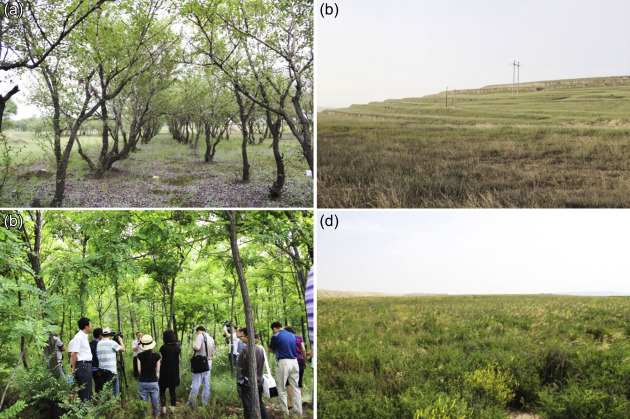Innovative Revegetation Solutions for Erosion Control
Erosion is a big problem for the environment. It can cause soil to wash away, harm buildings, and make water dirty. One of the most effective ways to combat erosion is through revegetation.
Adding plants in areas where the soil can wash away helps hold the soil in place, provides homes for different plants and animals, and makes the place look nicer.
In this article, we will explore innovative revegetation solutions for erosion control, highlighting the advantages and practical applications of these methods.

The Advantages of Revegetation
Revegetation offers a multitude of benefits beyond erosion control. Understanding these advantages can help in making informed decisions when planning erosion control projects.
Soil Stabilization
One of the primary benefits of revegetation is soil stabilization. Plant roots help to bind the soil together, reducing the risk of erosion caused by wind and water. This stabilization is crucial in preventing landslides and maintaining the integrity of slopes and embankments.
Biodiversity Enhancement
Revegetation contributes to the enhancement of biodiversity by providing habitats for various plant and animal species. A diverse ecosystem is more resilient to environmental changes and can offer numerous ecological benefits, including improved soil health and water retention.
Water Quality Improvement
Vegetation plays a vital role in improving water quality by filtering pollutants and reducing runoff. Plants absorb excess nutrients and contaminants, preventing them from entering water bodies and causing pollution. This filtration process is essential in maintaining healthy aquatic ecosystems.
Aesthetic and Recreational Value
Revegetation can significantly enhance the aesthetic and recreational value of an area. Green spaces look nice and can be used for fun activities, making people feel better and improving their lives.
Innovative Revegetation Solutions
Several innovative revegetation solutions have been developed to address erosion control more effectively. These solutions incorporate advanced techniques and technologies to maximize the benefits of revegetation efforts.
Hydro-Seeding
Hydro-seeding is a common way to grow plants by spraying seeds, mulch, and water on the ground. This method is highly efficient, allowing for rapid and even distribution of seeds over large areas. The mulch keeps the soil moist and protects the seeds. This helps them grow successfully.
Erosion Control Blankets
Erosion control blankets are biodegradable mats made from natural fibers such as straw, coconut coir, or wood excelsior. These blankets are placed over the soil to provide immediate protection against erosion while the vegetation establishes itself. As the plants grow, the blankets gradually decompose, enriching the soil with organic matter.
Geo-Engineering Solutions
Geo-engineering solutions involve the use of synthetic materials and structures to support revegetation efforts. Examples include geotextiles, geogrids, and cellular confinement systems. These materials make soil stronger and help plants grow in tough places like steep slopes and soil that erodes easily.
Native Plant Species
Using native plant species in revegetation projects is a sustainable and effective approach to erosion control. Plants that grow naturally in an area are used to the weather and soil there. This makes them stronger and easier to take care of. Additionally, native species support local biodiversity and can help restore natural habitats.
Bioengineering Techniques
Bioengineering techniques combine biological and engineering principles to create sustainable erosion control solutions. One example is the use of live stakes, which are cuttings from live plants that are inserted directly into the soil. These stakes take root and grow into mature plants, providing immediate erosion control and long-term stability.
Practical Applications of Revegetation Solutions
Revegetation solutions can be applied in various settings, each with its unique challenges and requirements. Here are some practical applications of these innovative techniques.
Roadside Slopes
Erosion control on roadside slopes is essential to prevent damage to infrastructure and ensure road safety. In these areas, people often use hydro-seeding and erosion control blankets to help the soil stay in place and make plants grow.
Construction Sites
Construction sites are particularly vulnerable to erosion due to the disturbance of soil and vegetation. Implementing revegetation solutions, such as geo-engineering materials and bioengineering techniques, can help stabilize the soil and prevent erosion during and after construction activities.
Riverbanks and Shorelines
Riverbanks and shorelines are prone to erosion caused by water flow and wave action. Planting native plants and using erosion control blankets can help stabilize areas and protect them from erosion, while also supporting aquatic life.
Agricultural Lands
Erosion on agricultural lands can lead to significant loss of fertile soil and reduced crop yields. By incorporating revegetation solutions such as cover crops and buffer strips, farmers can enhance soil health, reduce erosion, and improve overall agricultural productivity.
Challenges and Considerations
Replanting plants helps prevent soil erosion, but there are difficulties and things to think about when starting these projects.
Site Assessment
It is important to carefully check the site before deciding what plants to use for regrowth. To make the revegetation project successful, we must carefully study the soil type, weather, slope, and plants in the area.
Maintenance and Monitoring
Revegetation projects require ongoing maintenance and monitoring to ensure the long-term success of the vegetation. This may include watering, fertilizing, and controlling invasive species. Regular monitoring helps identify any issues early on, allowing for timely interventions.
Cost and Resources
Planting new vegetation in an area can be expensive. The cost depends on the size of the area, the methods used, and the resources available. Creating a budget and making sure you have enough money to cover everything from planting to maintenance is very important for any project.
Conclusion
Revegetation is a powerful tool for erosion control, offering numerous environmental, economic, and social benefits. We can stop erosion and make the land look better by using new ways to grow plants, like spraying seeds with water, covering the ground with special blankets, using certain materials, planting native plants, and using bioengineering methods.
Careful planning, site assessment, and ongoing maintenance are essential to the success of revegetation projects. By embracing these solutions, we can create more resilient and sustainable environments for future generations.